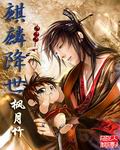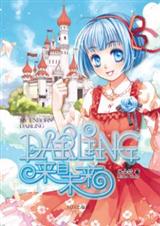The Library-第14章
按键盘上方向键 ← 或 → 可快速上下翻页,按键盘上的 Enter 键可回到本书目录页,按键盘上方向键 ↑ 可回到本页顶部!
————未阅读完?加入书签已便下次继续阅读!
rities on manners and costume。 But the attitudes of the figures are too often stiff and ungainly; while the position is frequently left to chance。 England could show nothing much better than Ogilby's translations of Homer; illustrated with big florid engravings in sham antique style。 The years between 1730 and 1820; saw the French 〃little masters〃 in their perfection。 The dress of the middle of the eighteenth century; of the age of Watteau; was precisely suited to the gay and graceful pencils of Gravelot; Moreau; Eisen; Boucher; Cochin; Marillier; and Choffard。 To understand their merits; and the limits of their art; it is enough to glance through a series of the designs for Voltaire; Corneille; or Moliere。 The drawings of society are almost invariably dainty and pleasing; the serious scenes of tragedy leave the spectator quite unmoved。 Thus it is but natural that these artists should have shone most in the illustration of airy trifles like Dorat's 〃Baisers;〃 or tales like Manon Lescaut; or in designing tailpieces for translations of the Greek idyllic poets; such as Moschus and Bion。 In some of his illustrations of books; especially; perhaps; in the designs for 〃La Physiologie de Gout〃 (Jouaust; Paris; 1879); M。 Lalauze has shown himself the worthy rival of Eisen and Cochin。 Perhaps it is unnecessary to add that the beauty and value of all such engravings depends almost entirely on their 〃state。〃 The earlier proofs are much more brilliant than those drawn later; and etchings on fine papers are justly preferred。 For example; M。 Lalauze's engravings on 〃Whatman paper;〃 have a beauty which could scarcely be guessed by people who have only seen specimens on 〃papier verge。〃 Every collector of the old French vigtes; should possess himself of the 〃Guide de l'amateur;〃 by M。 Henry Cohen (Rouquette; Paris; 1880)。 Among English illustrated books; various tastes prefer the imaginative works of William Blake; the etchings of Cruikshank; and the woodcuts of Bewick。 The whole of the last chapter of this sketch is devoted; by Mr。 Austin Dobson; to the topic of English illustrated books。 Here it may be said; in passing; that an early copy of William Blake's 〃Songs of Innocence;〃 written; illustrated; printed; coloured; and boarded by the author's own hand; is one of the most charming objects that a bibliophile can hope to possess。 The verses of Blake; in a framework of birds; and flowers; and plumes; all softly and magically tinted; seem like some book out of King Oberon's library in fairyland; rather than the productions of a mortal press。 The pictures in Blake's 〃prophetic books;〃 and even his illustrations to 〃Job;〃 show an imagination more heavily weighted by the technical difficulties of drawing。
The next class of rare books is posed of works from the famous presses of the Aldi and the Elzevirs。 Other presses have; perhaps; done work as good; but Estienne; the Giunta; and Plantin; are paratively neglected; while the taste for the performances of Baskerville and Foulis is not very eager。 A safe judgment about Aldines and Elzevirs is the gift of years and of long experience。 In this place it is only possible to say a few words on a wide subject。 The founder of the Aldine press; Aldus Pius Manutius; was born about 1450; and died at Venice in 1514。 He was a man of careful and profound learning; and was deeply interested in Greek studies; then encouraged by the arrival in Italy of many educated Greeks and Cretans。 Only four Greek authors had as yet been printed in Italy; when (1495) Aldus established his press at Venice。 Theocritus; Homer; AEsop; and Isocrates; probably in very limited editions; were in the hands of students。 The purpose of Aldus was to put Greek and Latin works; beautifully printed in a convenient shape; within the reach of all the world。 His reform was the introduction of books at once cheap; studiously correct; and convenient in actual use。 It was in 1498 that he first adopted the small octavo size; and in his 〃Virgil〃 of 1501; he introduced the type called Aldine or Italic。 The letters were united as in writing; and the type is said to have been cut by Francesco da Bologna; better known as Francia; in imitation of the hand of Petrarch。 For full information about Aldus and his descendants and successors; the work of M。 Firmin Didot; (〃Alde Manuce et l'Hellenisme a Venise: Paris 1875);〃 and the Aldine annals of Renouard; must be consulted。 These two works are necessary to the collector; who will otherwise be deceived by the misleading assertions of the booksellers。 As a rule; the volumes published in the lifetime of Aldus Manutius are the most esteemed; and of these the Aristotle; the first Homer; the Virgil; and the Ovid; are perhaps most in demand。 The earlier Aldines are consulted almost as studiously as MSS。 by modern editors of the classics。
Just as the house of Aldus waned and expired; that of the great Dutch printers; the Elzevirs; began obscurely enough at Leyden in 1583。 The Elzevirs were not; like Aldus; ripe scholars and men of devotion to learning。 Aldus laboured for the love of noble studies; the Elzevirs were acute; and too often 〃smart〃 men of business。 The founder of the family was Louis (born at Louvain; 1540; died 1617)。 But it was in the second and third generations that Bonaventura and Abraham Elzevir began to publish at Leyden; their editions in small duodecimo。 Like Aldus; these Elzevirs aimed at producing books at once handy; cheap; correct; and beautiful in execution。 Their adventure was a plete success。 The Elzevirs did not; like Aldus; surround themselves with the most learned scholars of their time。 Their famous literary adviser; Heinsius; was full of literary jealousies; and kept students of his own calibre at a distance。 The classical editions of the Elzevirs; beautiful; but too small in type for modern eyes; are anything but exquisitely correct。 Their editions of the contemporary。 French authors; now classics themselves; are lovely examples of skill in practical enterprise。 The Elzevirs treated the French authors much as American publishers treat Englishmen。 They stole right and left; but no one plained much in these times of slack copyright; and; at all events; the piratic larcenous publications of the Dutch printers were pretty; and so far satisfactory。 They themselves; in turn; were the victims of fraudulent and untradesmanlike imitations。 It is for this; among other reasons; that the collector of Elzevirs must make M。 Willems's book (〃Les Elzevier;〃 Brussels and Paris; 1880) his constant study。 Differences so minute that they escape the unpractised eye; denote editions of most various value。 In Elzevirs a line's breadth of margin is often worth a hundred pounds; and a misprint is quoted at no less a sum。 The fantastic caprice of bibliophiles has revelled in the bibliography of these Dutch editions。 They are at present very scarce in England; where a change in fashion some years ago had made them mon enough。 No Elzevir is valuable unless it be clean and large in the margins。 When these conditions are satisfied the question of rarity es in; and Remy Belleau's Macaronic poem; or 〃Le Pastissier Francais;〃 may rise to the price of four or five hundred pounds。 A Rabelais; Moliere; or Corneille; of a 〃good〃 edition; is now more in request than the once adored 〃Imitatio Christi〃 (dateless); or the 〃Virgil〃' of 1646; which is full of gross errors of the press; but is esteemed for red characters in the letter to Augustus; and another passage at page 92。 The ordinary marks of the Elzevirs were the sphere; the old hermit; the Athena; the eagle; and the burning faggot。 But all little old books marked with spheres are not Elzevirs; as many booksellers suppose。 Other printers also stole the designs for the tops of chapters; the Aegipan; the Siren; the head of Medusa; the crossed sceptres; and the rest。 In some cases the Elzevirs published their books; especially when they were piracies; anonymously。 When they published for the Jansenists; they allowed their clients to put fantastic pseudonyms on the title pages。 But; except in four cases; they had only two pseudonyms used on the titles of books published by and for themselves。 These disguises are 〃Jean Sambix〃 for Jean and Daniel Elzevir; at Leyden; and for the Elzevirs of Amsterdam; 〃Jacques le Jeune。〃 The last of the great representatives of the house; Daniel; died at Amsterdam; 1680。 Abraham; an unworthy scion; struggled on at Leyden till 1712。 The family still prospers; but no longer prints; in Holland。 It is mon to add duodecimos of Foppens; Wolfgang; and other printers; to the collections of the Elzevirs。 The books of Wolfgang have the sign of the fox robbing a wild bee's nest; with the motto Quaerendo。
Curious and singular books are the next in our classification。 The category is too large。 The books that be 〃curious〃 (not in the booksellers' sense of 〃prurient〃 and 〃disgusting;〃) are innumerable。 All suppressed and condemned books; from 〃Les Fleurs du Mal〃 to Vanini's 〃Amphitheatrum;〃 or the English translation of Bruno's 〃Spaccia della Bestia Trionfante;〃 are more or less rare; and more or less curious。 Wild books; like William Postel's 〃Three Marvellous Triumphs of Women;〃 are 〃curious。〃 Freakish books; like macaronic poetry; written in a medley of languages; are curious。 Books from private presses are singular。 The old English poets and satirists turned out many a book curious to the last degree; and priced at a fantastic value。 Such are 〃Jordan's Jewels of Ingenuity;〃 〃Microcynicon; six Snarling Satyres〃 (1599); and the 〃Treatize made of a Galaunt;〃 printed by Wynkyn de Worde; and found pasted into the flyleaf; on the oakboard binding of an imperfect volume of Pynson's 〃Statutes。〃 All our early English poems and miscellanies are curious; and; as relics of delightful singers; are most charming possessions。 Such are the 〃Songes and Sontes of Surrey〃 (1557); the 〃Paradyce of daynty Deuices〃 (1576); the 〃Small Handful of Fragrant Flowers;〃 and 〃The Handful of Dainty Delights; gathered out of the lovely Garden of Sacred Scripture; fit for any worshipful Gentlewoman to smell unto;〃 (1584)。 〃The Teares of Ireland〃 (1642); are said; though one would not expect it; to be 〃extremely rare;〃 an



![(Death Note同人)[DN同人]路过封面](http://www.667zw.com/cover/13/13229.gif)
![(love live同人)[绘希]瞳中佳人封面](http://www.667zw.com/cover/14/14128.gif)
![(综漫同人)[综]LINE!LINE!刑天游戏封面](http://www.667zw.com/cover/16/16450.jpg)
